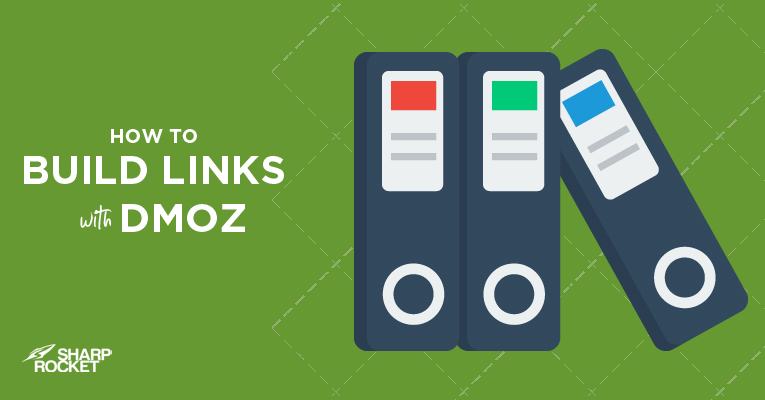Today, I want to share a really simple method for using DMOZ to come up with killer linkable content ideas – we’ve been using this creative link building process for a little while now with some great results.

The premise is simple: recreate broken content found on DMOZ and get links from pages linking to the original content.
Apparently, you can’t access DMOZ now. DMOZ has officially closed last March 17, 2017 after 19 years of providing users with organized directory of websites using volunteer human submission.
However, there’s a mirror website that you can access to and use to locate broken content that you can recreate and promote to build links to your site – DMOZtools.net.
The methodology is simple and can be summarized as follows:
Step 1: Find broken content on DMOZtools.
Step 2: Assess the dead page’s content using Wayback Machine (archive.org)
Step 3: Check the websites linking to the broken page
Step 4: Create an improved version of the page
Step 5: Start reaching out to sites linking to the dead page
OUTDATED CONTENT CREATION
Step 1: Find broken content on DMOZtools
Go through each category that is relevant to your brand. Dig deeper into each subcategory to find the most relevant fit.
For a quick search, it is best to use site:dmoztools.net along with the category of your website.
You have to sort through subcategories and only look for ones that make sense to your brand. You could go for tangential markets to expand your search as well (e.g.
Manually check lists for any broken links using LinkMiner.
If you have subscribed to Ahrefs premium access, it’d be more handy to set this option below:
When LinkMiner completes its checking, it’ll automatically show how many referring domains does each external links acquires.
A broken link with more than a hundred referring domains is worth looking than a defunct page with less than 10 linked-to pages.
Step 2: Assess the dead page’s content using Wayback Machine (archive.org)
Take a quick look at the original content of the dead page. By doing so, it can help you assess if it’s something you can recreate by yourself or with your team.
Given that the information on the content may be outdated, it’d require certain updates to make it more relevant, more informative and more comprehensive than the original content piece.
For technical verticals, you may hire a practitioner or content developer that has an extensive experience about the subject matter to add more specialized information to the content asset (check out my comprehensive guide on skyscraper technique).
Step 3: Check the websites linking to the broken page
Understand what types of links are currently linking to the broken page in order to assess their probability to link to you.
In general, you want to be looking for low-friction link opportunities. Curators of resources pages (links pages), for example, may only need to spend a few minutes to add your link as opposed to high-end news that would require a full blog post.
A quick look on the frictionness of the links to the broken (original) page can help you determine if it’s worthwhile to promote your recreated content to them.
Step 4: Create an improved version of the page
Besides looking for new information/updates for the content, it is best to find additional authority sources that you can use as a reference to build your own content.
If you’re fortunate enough to find a resources-type of broken content you can recreate, make due diligence to find all correct links (or the best replacements to broken links on the original page). In such a case, you will produce an industry list of resources that serves your users well.
Step 5: Start reaching out to sites linking to the dead page
Content creation, as we always say, is 50% of the battle. When you have published the content, it’s time to promote the piece to people who’ll be interested to link to it (or even share your web asset).
For this link building strategy, you can scour all pages linking to the original broken content. You may use link tracking tools like Ahrefs to find them.
Collect and prioritize linking opportunities with low friction to gain quick wins in your outreach. For example, you can make a list of all resource pages first and prioritize them in outreach. Add industry blogs and high-end news sites to the list, supply email contacts, and start pitching.
Check Referring Domains of Broken Links on Original Content
If you have produced a list-of-resources type of content, you can check broken links on original content to see if they have referring pages that may seem be qualified as additional link prospects for your re-created content piece.
Now, you’ll be able to expand your link list and promote your content asset to as many linkers possible.
Need help with outreach? Check out our link building services here.